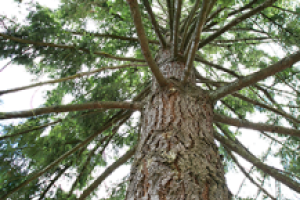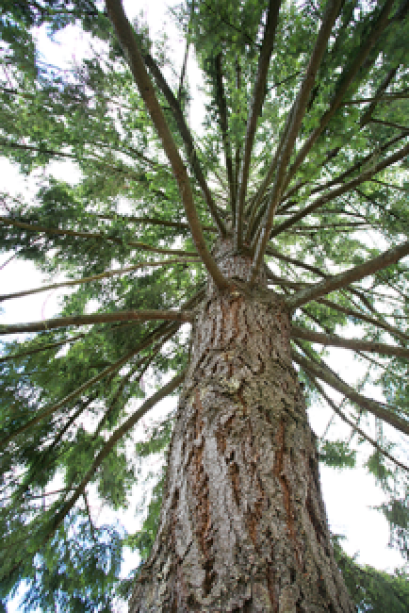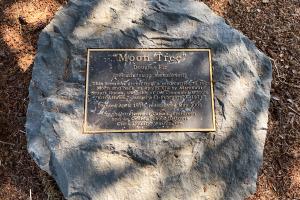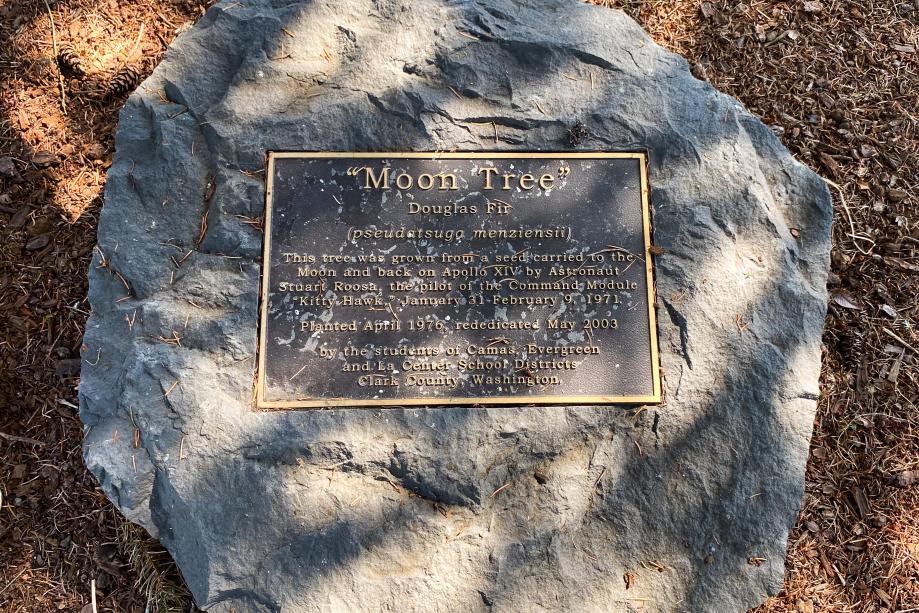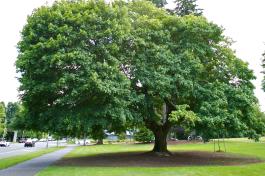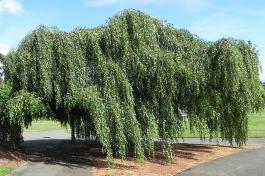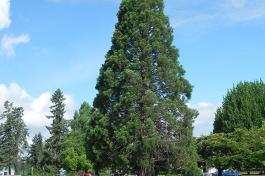Moon Trees
Pseudotsuga menziesii
Learn about the Washington state moon trees including when and why they were planted, how to identify them, and where to find them on campus.
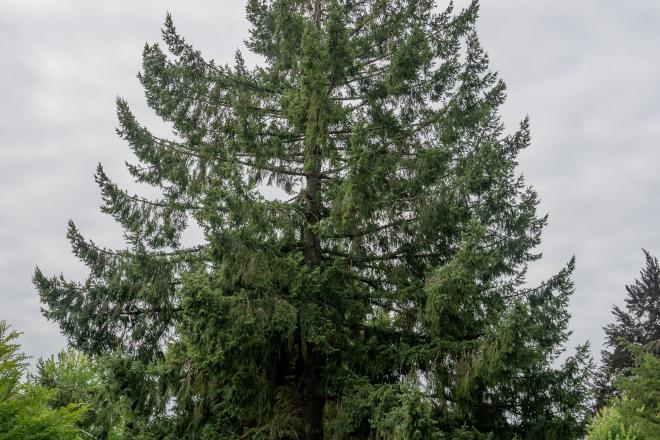
Tree Facts
Traits
- Single needles 3/4-1 1/4" long attached around all sides of branches
- Cones with two extra appendages emerging from each scale
- Thick, layered, scaly bark
Native Range
- Northwestern United States
- Southwest Canada
- Rocky Mountains
Story of the Tree
While the Douglas fir is one of the most common evergreens in Washington, this particular tree has a unique history.
During the 1971 Apollo 14 moon mission, astronaut Stuart Roosa brought hundreds of tree seeds with him into lunar orbit, including Douglas fir seeds that the U.S. Forest Service sprouted. The resulting seedlings were planted throughout the United States.
The first Washington state ‘moon tree’ was planted as a seedling on the Capitol Campus at its location on Capitol Way, near Tivoli fountain. It’s a very full and beautifully formed tree that has a place of honor on the campus, reminding visitors of the Apollo missions to the moon. The tree is marked by a bronze plaque that describes its significance.
In 2020, three more moon trees were planted using cuttings from the original campus moon tree.
Learn more about this joint project between the U.S. Forest Service and NASA.


